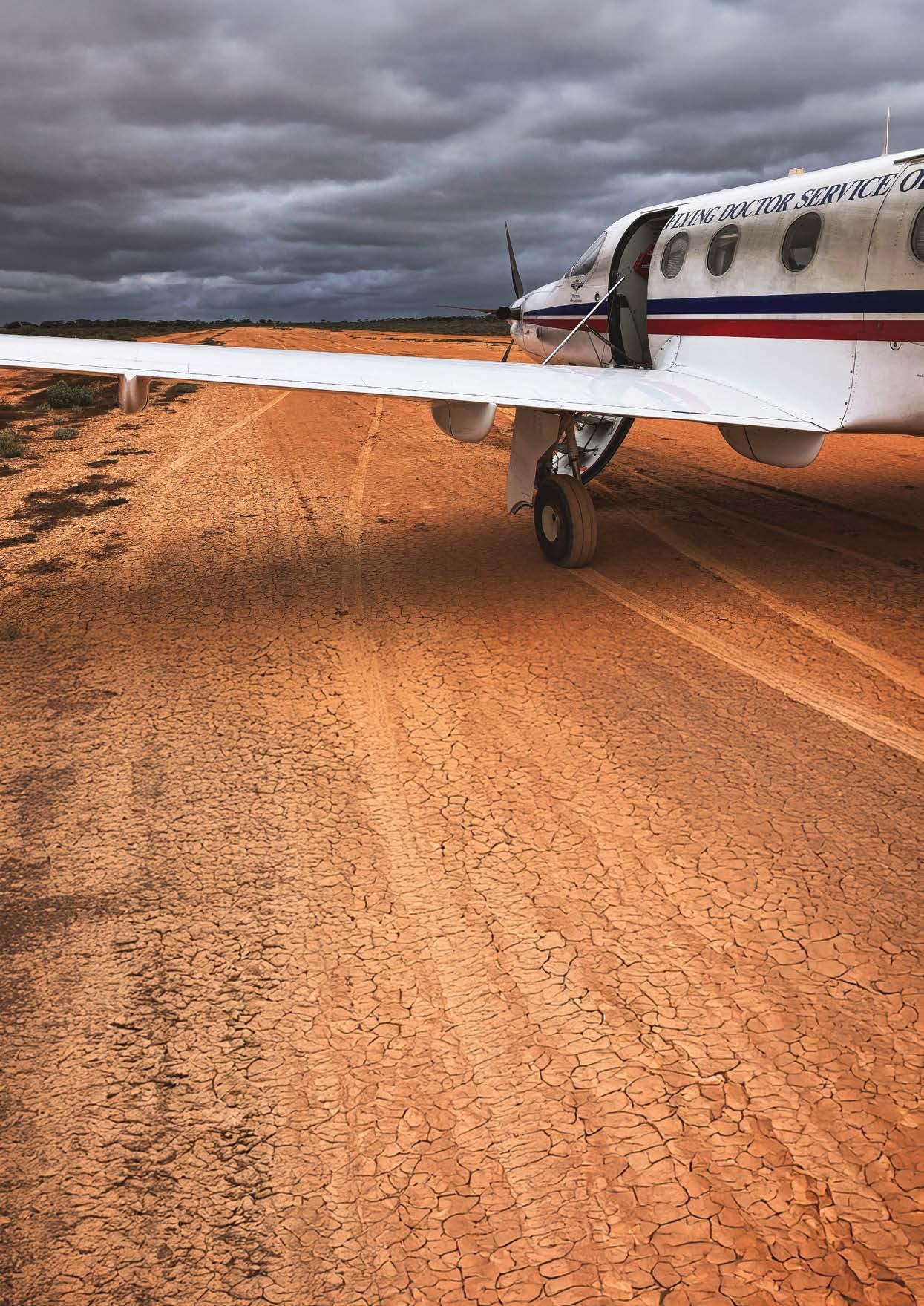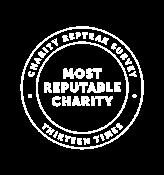
Acknowledgements:




Acknowledgements:


I hope 2025 is off to a great start for you and your family.
At the Royal Flying Doctor Service of Western Australia (RFDS) we have a lot to look forward to. Thanks to the major gift from two generous donors, our much-anticipated flight simulator is about to arrive from the USA and our pilots will begin using it for their ongoing safety training in the middle of this year. It’s expected using the simulator will free up our aeromedical aircraft for our patients, contribute to safety and save us significant costs.
We were very pleased that in the lead-up to the WA State Election, the WA Nationals, Labor and Liberals all made pledges to increase the RFDS presence in Geraldton, recognising the growing demand for our services in the Mid West region. Geraldton Health Campus is our busiest regional retrieval point, accounting for more than 900 patients each year.
A new report has also highlighted how much the RFDS is a valued part of WA’s identity. Almost 95 per cent of those surveyed say our service is critical to giving regional and remote Western Australians access to health care. You can read more about the report’s findings on page 12.
I hope you enjoying reading this issue of Your Flying Doctor magazine. On pages 4 & 5 you’ll meet RFDS helicopter pilot Jason Parsons, who has previously flown for the RAAF, the US Air Force and Qantas. On page 10 you’ll read about RFDS patient Callum Smith, who almost lost his arm when a day on the water went wrong and we are very proud to share news about an honour for dedicated RFDS fundraiser Maureen Milne on page 8.
Supporters like you play a major role in the service RFDS provides to the WA community. We couldn’t do what we do without you.
Best wishes

Judith Barker ASM CEO, RFDS Western Australia
Jade Pers thought she had seen it all in nearly 10 years as a retrieval nurse for RFDS – but she had never delivered a baby.
That changed in November when Fitzroy Crossing woman Shaina Chungulla went into labour mid-flight. Shaina was almost 34 weeks pregnant and her three other children had all arrived before reaching full term.
She was being flown to Broome because the town’s hospital is the best option in the Kimberley region to support premature babies. The day before, a doctor had assessed Shaina as being in the early stages of labour, but seemingly nothing had progressed.
As the flight prepared for take-off, Shaina’s contractions were about 30 minutes apart. It didn’t appear that birth was imminent.
“We were on the ground in Fitzroy Crossing, it was really hot and we also had a second patient on the plane,” said Jade. “We needed to get going (to Broome) - we couldn’t wait around for the next contraction.”
About halfway through the hour-long flight to Broome, Shaina whispered to Jade that she thought her waters had broken. That’s when she realised the crew could have to deliver a premature baby on the plane, a daunting task.
“My colleague (Dr Carl Hamer) said my face was white when I told him her waters had broken,” said Jade. “Shaina was gripping the rail and I could tell by her demeanor she knew she was about to have a baby.”
Jade stayed calm and called the Broome RFDS base to request that a clinical team meet the plane as soon as it landed.


“As we landed, Shaina had the urge to push and when the pilot (Nathan Wileman) heard me say that, he shut down the plane as quickly as I have ever seen a pilot do it and got her off the plane!” Jade said.
Shaina was rushed into the Broome RFDS base and baby Louisianna was born with pink cheeks and breathing well, just two minutes after the plane landed.
Jade visited Shaina and Louisianna in Broome hospital the next day. She says the delivery was a career highlight. I was lucky that it all went so well and it happened just in time for my 10 year anniversary with RFDS, so it really felt like a gift.
After spending about four weeks in Broome Hospital, Shaina and Louisianna are now back home in Fitzroy Crossing.
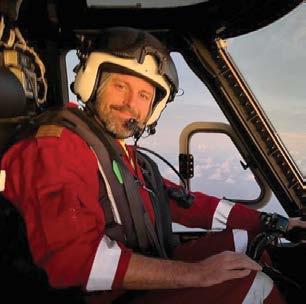
RFDS patients are in safe hands with helicopter pilot Jason Parsons, whose wide-ranging aviation career spans flying for the Royal Australian Air Force and United States Air Force to the Qantas Dreamliner.
Jason set his sights on becoming a pilot when he was growing up in Mandurah, where he loved spotting Air Force planes fly past the coast. After being accepted into the specialist aviation program at Melville Senior High School, he began his flying
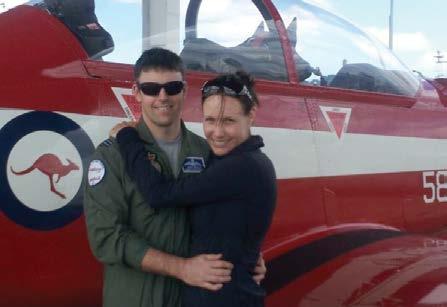
career at Jandakot’s Royal Aero Club before joining the Royal Australian Air Force (RAAF).
“I always wanted to fly in the Air Force, I didn’t have much interest in the airlines back then,” he said. “You sign up for a decade, and you know you’ll be posted around every three years.”
Mostly flying jets, his postings included three years as an Aircraft Commander with the United States Air Force, with taskings including Presidential Overwatch and air control over New Orleans as Hurricane Katrina made landfall.
Upon returning to Australia, Jason became a Qualified Flying Instructor for the RAAF in regional NSW and Victoria. The role also included conducting aerobatic displays in the Roulettes. Jason also worked with Special Ops in their planning for complex taskings.
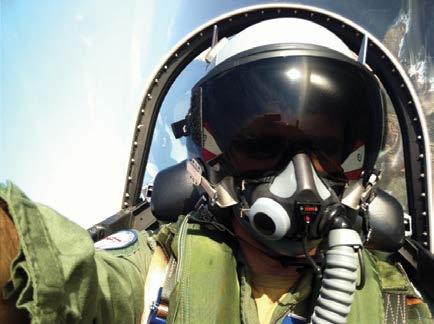
After 15 years in the RAAF, Jason was ready for a change and transferred to flying helicopters for the Royal Australian Navy.
“I’d always had an interest in helicopters and I’d done all I wanted to do in the Air Force,” Jason said. “It was daunting starting something from scratch and it’s expensive to do the training, so I stayed with Defence and they paid for my helicopter training.”
Over the next five years, Jason flew the MH60R Seahawk and trained with the US Navy in Florida. He carried out long deployments on Navy Frigates all over the world but found it difficult being away from his wife Donna and their two young children.
It was for that reason that he eventually resigned from the Navy, moved back to WA and began flying for Qantas. Jason flew the 787 Dreamliner, mostly on the Perth to London route. When the COVID-19 pandemic shut down international travel in early 2020, he moved into
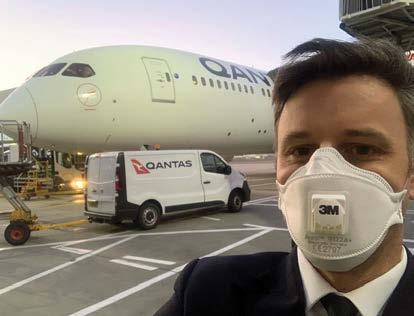
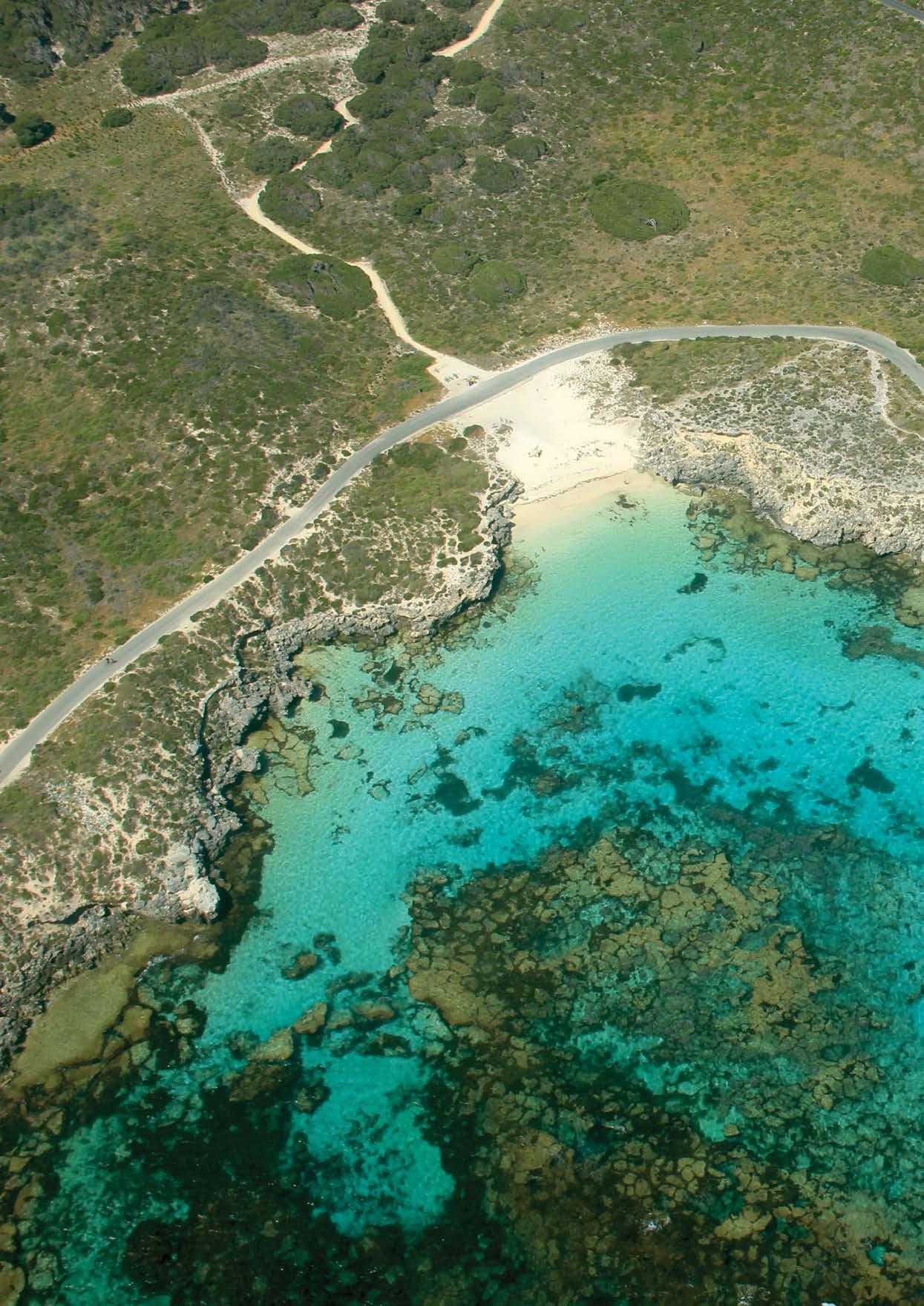
flying offshore helicopters for oil and gas charters, doing fly-in fly-out work from Broome, Darwin, Exmouth and Truscott.
“Being able to switch back to flying helicopters taught me a big lesson about the value of being diversified,” Jason said. “After COVID hit, suddenly you had highly trained airline pilots working at supermarkets because they didn’t have other options.”
But the FIFO roster took a toll.
“I was trying two week swings, three week swings and we found as a family that it was doable, but not enjoyable. Some people get used to it, but I was living half my life away from home.”
When Jason saw an advertisement that the RFDS was hiring a Perth-based helicopter pilot in late 2023 he didn’t hesitate to apply, and he was soon flying the RFDS Fortescue Heli-Med Service EC145 helicopters. The helicopters carry out inter-hospital transfers within a 250km range of the RFDS Jandakot base.
“We get to do some very rewarding jobs (at RFDS) and it just happens to be very unique that I live around the corner and can ride my bike to work, do a good job and go home,” Jason said.
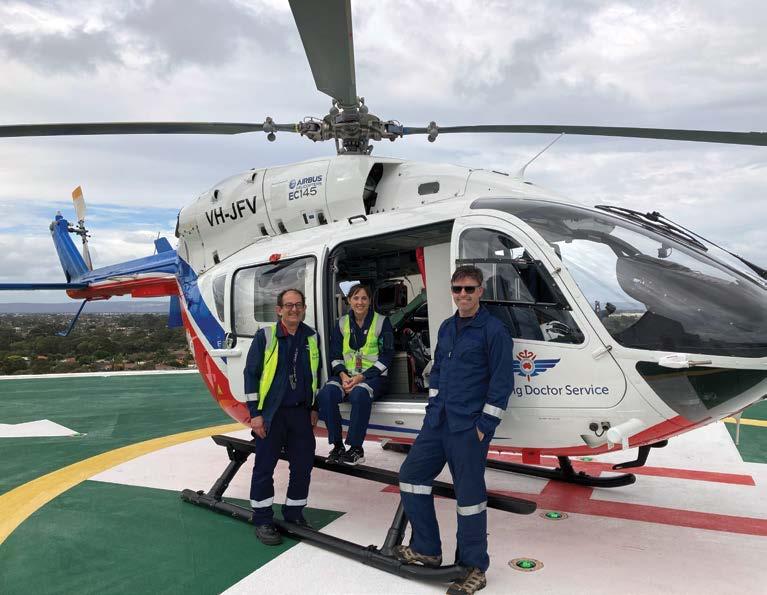
I like the stability this job offers in my personal life – and while the roster stays the same, on any given day I don’t know whether I will be flying to Bunbury or Dalwallinu or Rottnest. So I know how my week looks but I don’t know how my day looks, and I really like that. There for you. With your support the Flying Doctor is able to respond to the evolving health needs of Western Australians. Donate at: rfdswa.com.au/autumn25
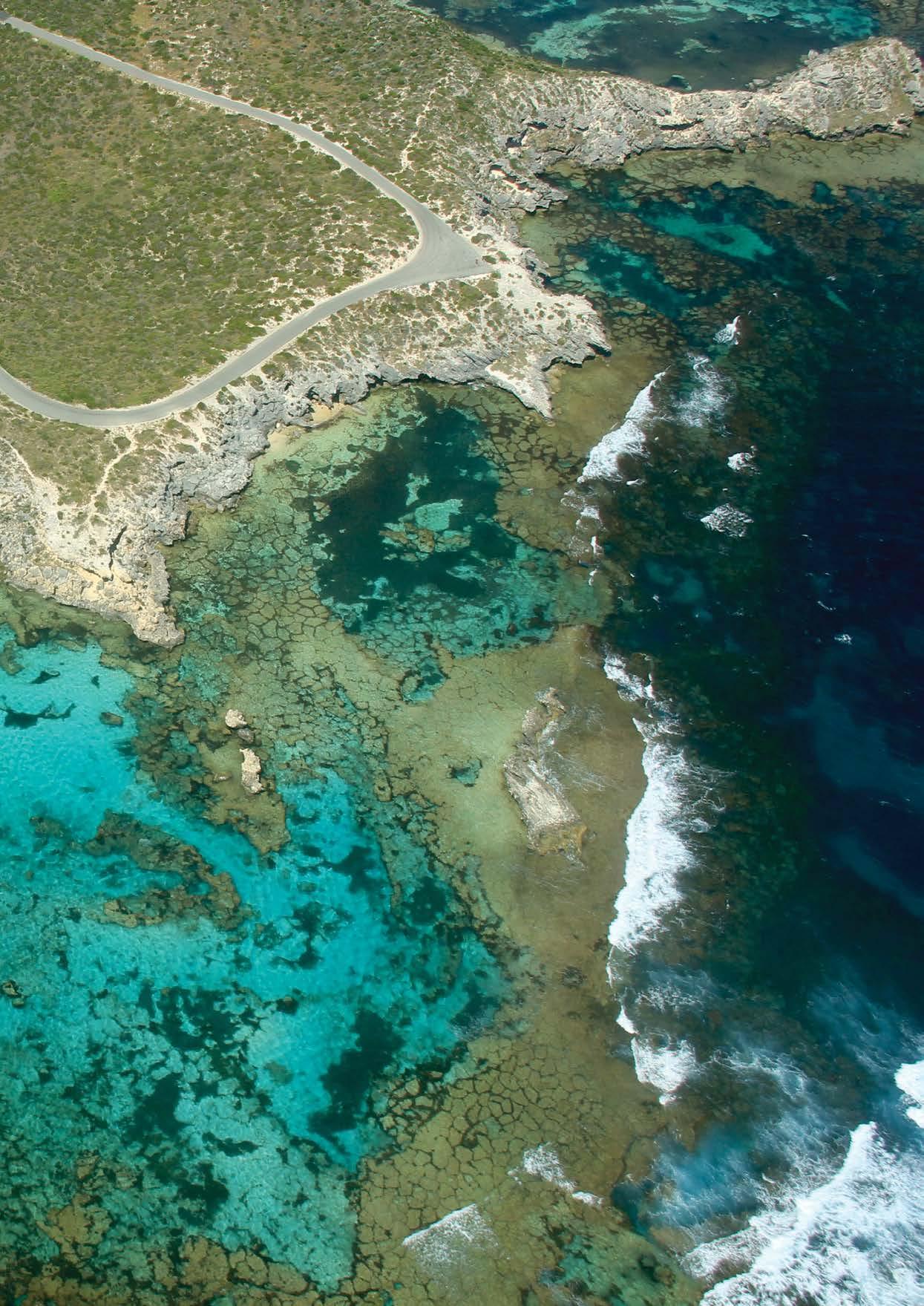
We have changed banks to provide you with more options and better security when donating to the RFDS in WA. This means more convenient ways to donate coming soon including BPAY, PayID, Apple Pay and PayPal. We can also still accept cheques.
If you make donations to the RFDS via phone, website or mail you don’t need to change anything –we’ve got it covered.
If you make donations via bank transfer or direct deposit, please update to our new banking details.
Name: RFDS Western Operations
BSB: 066 514
Account Number: 0090 0310
Reference: Donor ID (give us a call if you need help locating this)
For more information, please visit rfdswa.com.au/banking or call our friendly team on 08 9417 6400 Monday to Friday between 8:30am and 4:30pm.
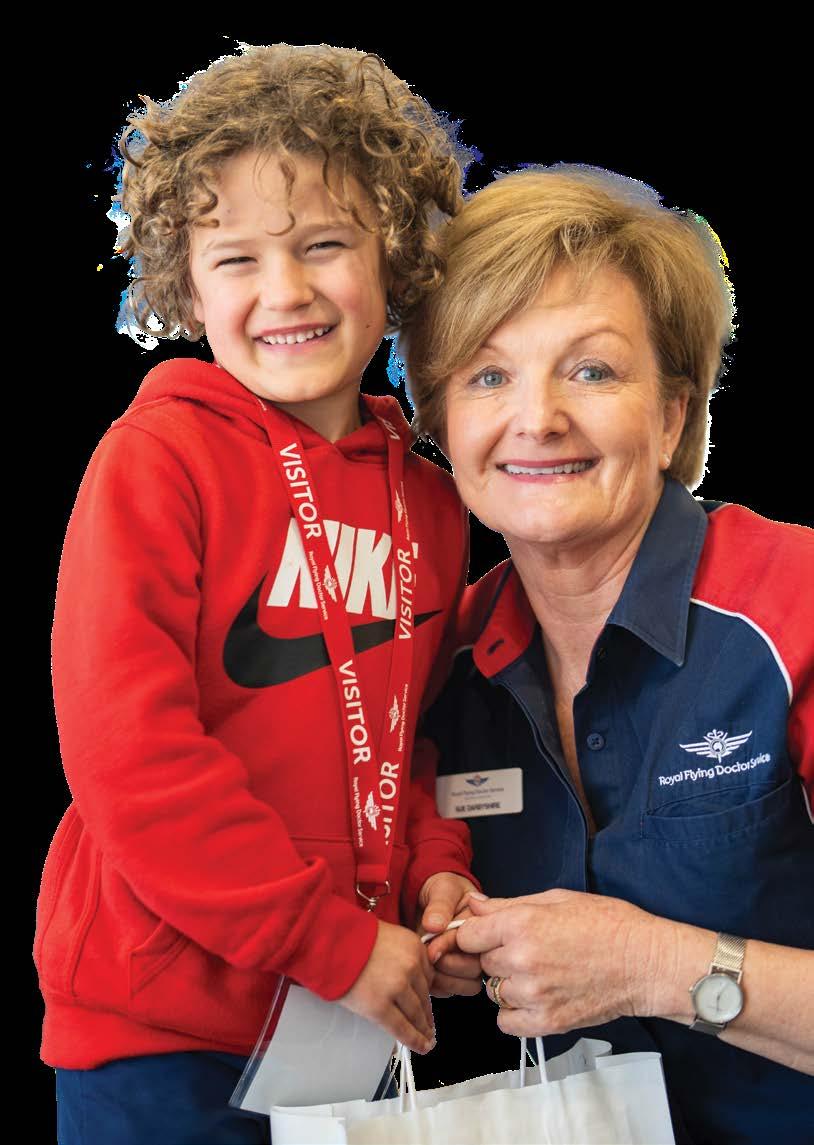

It seems unbelievable that anyone could survive being knocked down by a 500 kilogram bale of feed, but Denmark farmer George Ross lived to tell the tale.
George has managed his cattle farm on the outskirts of Denmark for more than 50 years.
Last year, the 77-year-old was feeding his stock when a giant bale rolled off his Ford Louisville truck, knocking George sideways off his feet and landing on his legs.
“I didn’t see it – I just felt it,” George said.
His son Rodney scrambled to lift George into the truck’s cab so he wasn’t trampled by the hungry cows.
George didn’t know at the time that he’d broken two vertebrae, his pelvis and collarbone. Rodney rushed him to Denmark Hospital, but it was clear he needed to be flown to Perth for further treatment.
The RFDS picked George up on a PC-12 aircraft, with retrieval nurse Libby Stearne recalling how stoic he was despite his multiple broken bones.
“We loaded him onto a vacuum mattress which helps to immobilise a patient with multiple broken bones, making the journey a little more comfortable,” she said. “We also used the intravenous electronic pump to deliver hydration and pain relief.”
“Everyone says I am a tough old bugger, but I didn’t feel very tough at the time,” George said.
George spent nine weeks at Fiona Stanley Hospital undergoing rehabilitation. He’s proud that less than 12 months on from the accident, he’s no longer taking any medication. He walks with a slight limp, and his son Rodney has had to take over many of the manual farm duties.
“I feel like one of the luckiest people on the planet that I am still here,” George said.
I don’t remember much of it but undoubtedly the Flying Doctor helped save my life - thank God for the RFDS.
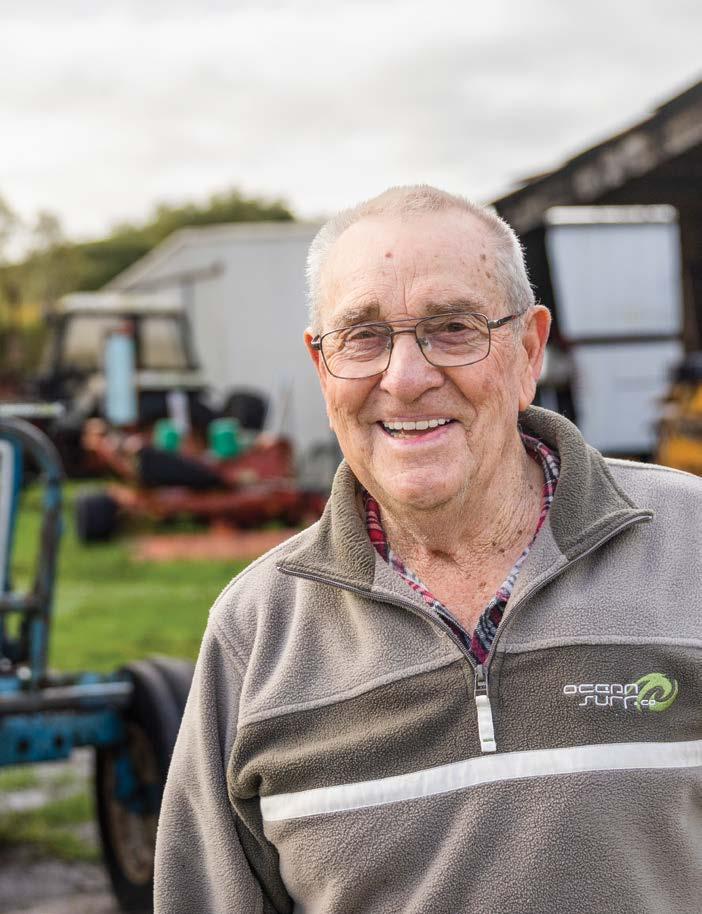


A long-serving volunteer with the Eastern Goldfields Section of the Royal Flying Doctor Service Auxiliary was named KalgoorlieBoulder Volunteer of the Year in the recent Australia Day Awards.
Maureen Milne was recruited to the Auxiliary as a young mum by her neighbour Peg in 1982.
“All of the ladies were so lovely and welcoming – a lot of them were from stations or had links to stations in the area,” Maureen said.
Now 73, she’s been volunteering with the Auxiliary for over 40 years, during which time more than a million dollars has been raised for
the RFDS. It’s mostly happened through grass roots efforts like bake sales, sausage sizzles, quiz nights and rattling tins.
“It certainly all adds up!” Maureen said. “And it’s amazing how quickly the years have passed.”
In 1984, Maureen was elected Secretary of the Auxiliary and held the position until 2005 – an outstanding 21 years of service.
Funds raised during her time have purchased roller doors on the Kalgoorlie hangar and generators for the bases at Kalgoorlie and Meekatharra.
Maureen convinced her best friend since childhood Marg Carrott to join the Auxiliary and Marg now serves as President.
Maureen is an amazing person, she just gets on with whatever needs to be done and has been unwavering in her dedication.
The Goldfields Children Charity was also named KalgoorlieBoulder’s Community Group / Event of the Year.
Their spectacular annual ball raises hundreds of thousands of dollars each year for the RFDS WA as well as Ronald McDonald House and local Goldfields families in need.
Five million dollars has been raised since the group formed 25 years ago.
New capability has been added to our fleet with the RFDS Fortescue Heli-Med Service now equipped to carry the state’s tiniest patients in a specialist neonatal cot.
In early February, the first newborn baby to be transferred via helicopter in the neonatal cot touched down on the rooftop helipad at Perth Children’s Hospital.
A generous Telethon grant funded a bespoke engineering solution to power and secure the cots in the helicopter. It allows a specialist team from the Newborn and Emergency Transport Service (NETS) alongside an RFDS flight nurse and pilot, to transfer unwell babies less than a month old from a regional hospital directly to the rooftop helipad at Perth Children’s Hospital.
Inside the cot, special ventilation settings provide warmth and crucial medical gases for the baby. In 2025, Telethon will also fund the cost of around 50 NETS helicopter flights, enabling RFDS to provide WA’s first aeromedical inter-hospital helicopter service for sick babies.
Until now, the capability had been limited to fixed-wing aircraft and road transfers.
RFDS WA General Manager Operations and Performance Damien Whitham said having the cots in the helicopters saves vital transfer time between medical facilities.
“We are so grateful to Telethon and Fortescue for helping us to transfer newborn and pre-term babies to neonatal care swiftly and safely,” he said.
Medical Director of NETS WA
Dr Jonathan Davis said it’s a wonderful new chapter in a long-standing partnership.
“NETS and RFDS work very closely together to provide the best care for babies in WA,” Dr Davis said. “We are very excited that the next phase of this relationship is literally taking off with new helicopter capability thanks to Telethon. Helicopter transport in WA allows NETS to have greater responsiveness to sick babies and faster transfer times directly to the hospital.”
We expect that up to 50 babies a year will be transferred via helicopter.

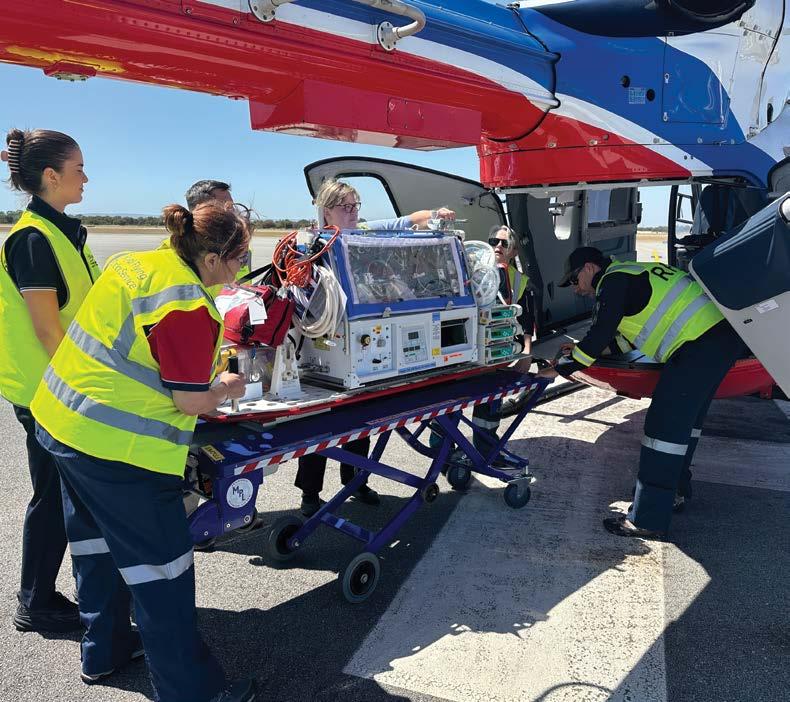

Callum Smith was enjoying a day of wakeboarding on Lake Argyle in the state’s far north when he took a fall that almost cost him his arm.
His partner Jess was the spotter on the boat and alerted the skipper that Callum had fallen.
“The skipper slowed the boat then powered up to turn around, but he didn’t know my arm had slipped and become trapped in the ski handle, dragging me along,” Callum said. Those on the boat realised something was wrong and pulled Callum from the water. Callum was in extreme pain and his arm had turned purple, with dark stretch marks.
With limited phone reception, the group struggled to connect to Triple Zero. Callum told his friends to activate the boat’s emergency position-indicating radio beacon (EPIRB). The EPIRB sent a signal to the Australian Maritime Safety Authority in Canberra which alerted nearby Kununurra police about the emergency. Officers picked up Callum and Jess at the boat ramp and drove them a short way before they were met by an ambulance crew, who rushed them to Kununurra Hospital as Callum’s arm continued to swell.
Jess works as a hand therapist and told the medical staff that she suspected Callum was suffering from compartment syndrome, a build-up of pressure from internal bleeding or tissue swelling that strangles muscles, arteries and nerves. If left untreated, this can cause permanent damage and in
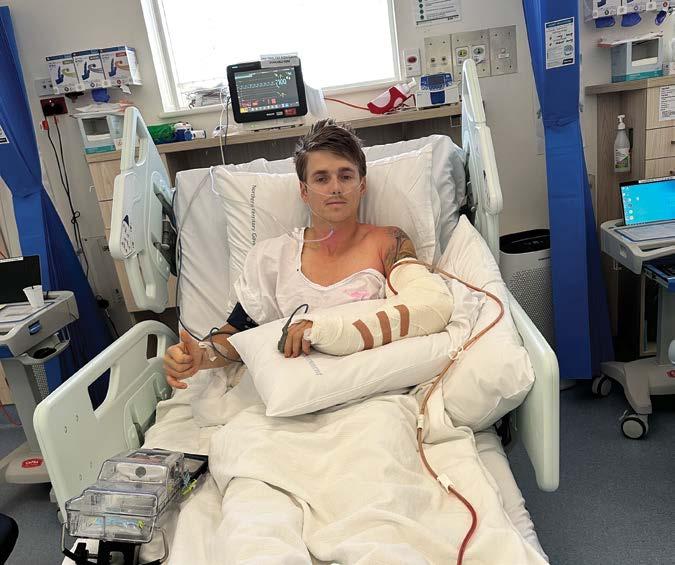
Kununurra Hospital staff called the RFDS, and it was agreed Callum needed urgent treatment. He was transferred to Darwin Hospital for surgery, which is a 45 minute flight rather than a three and a half hour journey to Perth. Callum recalls the RFDS clinicians keeping him calm during the flight.
“I remember looking out the window of the plane and thinking to myself, is this really happening?” Callum recalls.
He was rushed into surgery and the surgeon later told him that if he had arrived even 30 minutes later, the muscle could have lost all blood flow, leading to loss of function or even amputation.
If it wasn’t for the RFDS, I probably would’ve lost my arm.
It was seven months before Callum could return to work as a heavy diesel mechanic, and he is still undergoing arm and hand therapy. He has lost most nerve sensation in his arm, but is grateful to have full movement.
“I can’t wait to get back on the wakeboard,” Callum said, “I’m not selling my boat, I will be back on the water as soon as I can.”


Living in the Pilbara, little Savannah loves being outdoors and playing in the red dirt. The sixyear-old was climbing a large tree in her family’s Tom Price backyard when she slipped from a branch and fell almost five metres.
Mid-fall, she sliced her face on the sharp edge of a shipping container in the yard.
Her mum Rachel found Savannah on the ground, dazed and injured. Unsure of the extent of her injuries, Rachel tried to keep her daughter as calm and still as possible.
Local police, firefighters and an ambulance crew arrived and worked together to safely move Savannah onto a stretcher, mindful that she could have broken bones or spinal injuries.
“As the ambulance drove away with Savannah inside, her twin Amahlia was beside herself,”
recalls Rachel, who was pregnant with her fourth child at the time.
Savannah was taken to Tom Price Hospital. Doctors were concerned about the possibility of internal bleeding and a punctured lung. They also suspected she had broken her collarbone, an arm and fingers, but they didn’t have the medical imaging equipment to know for sure.
The RFDS picked up Savannah in the Rio Tinto LifeFlight jet from Paraburdoo and flew her to Perth. She was then transferred to Perth Children’s Hospital for tests.
Scans revealed that miraculously, despite such a huge fall, Savannah hadn’t broken any bones or suffered internal bleeding. She did have a serious concussion which affected her speech and thought process for about four weeks. She also underwent facial surgery to make sure the cut near her eye healed well.
Life can change in the blink of an eye and when you live regionally, the RFDS is vital.
The family of six are currently exploring Australia in a caravan.
“Savannah’s accident put everything in perspective – life is short, and you have to make the most of every day,” says Rachel.
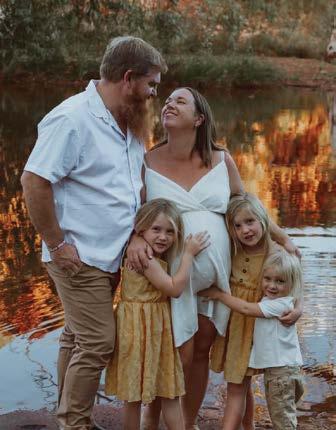
A new report shows the RFDS is a valued part of the Western Australian identity and plays a critical role in health care for people in the bush.
The report captured the views of hundreds of Western Australians to create a picture of our current impact through the eyes of the community and peers in the health sector. The assessments and findings will guide the RFDS’ plans for the future.
Nine out of 10 people feel more comfortable knowing the RFDS is there if something goes wrong while living, working or travelling in regional WA, according to the
76% believe the RFDS provides improved health outcomes for regional communities.
independent report by Social Ventures Australia. Almost 95 per cent of people surveyed also feel the RFDS is critical to giving regional and remote Western Australians essential access to health care.
The report also highlighted how critical it is for the RFDS to have strong relationships with the communities we serve, including our donors and corporate partners. The importance of working in partnership is vital in such a large, sparsely populated state where the challenges of health equity are great - we will only succeed when we work together.
The RFDS exists to give people living and working in regional and remote Western Australia essential health care that city-based residents
take for granted. Aeromedical retrievals, remote primary health care clinics, telehealth consults and medical chests are just some of the unique services the RFDS offers in regional communities.

That safety net, knowing that they’re there, gives you such a sense of relief. That safety is there, a phone call and they will be there when they can. It’s just such a great thing to have for our community.
Community member
83% strongly agree the RFDS is critical for providing access to health care for regional Western Australians.
79% strongly agree the RFDS increases the wellbeing of the community.
72% feel more comfortable working, living and travelling in regional and remote WA knowing the RFDS is there.
They [the RFDS] do a phenomenal job. If there’s something beyond our [remote nurses’] scope, they will ring the RFDS doctor to get advice. They help us out enormously, particularly in the remote locations in the Western Desert.
Health service provider
That reassurance that they [RFDS] are there, which then allows more community members to live on Country for longer… it’s really important for their wellbeing, for the individuals and families and those communities that they are able to live on their land.
Health service provider

Retrieval Nurse John Howes has marked an incredible 30 years of service with the RFDS, caring for thousands of patients in that time.
More than 30 years ago, John Howes moved from Melbourne’s inner-city Fitzroy to carrying out patient retrievals from Fitzroy Crossing in the Kimberley. The nurse made a dramatic seachange to the remote north of WA, working from the RFDS Derby base, where he stayed for seven years. He’s since worked from the Jandakot base for 23 years, where he’s the Senior Base Nurse.
“It’s a cliché but every day in this job is different, and I have seen so many changes in my time - from the aircraft and the equipment on board to the introduction of satellite phones,” said John. “I started flying in the Beechcraft Super King Air B200Cs and now we have these state-of-the art jet aircraft.”
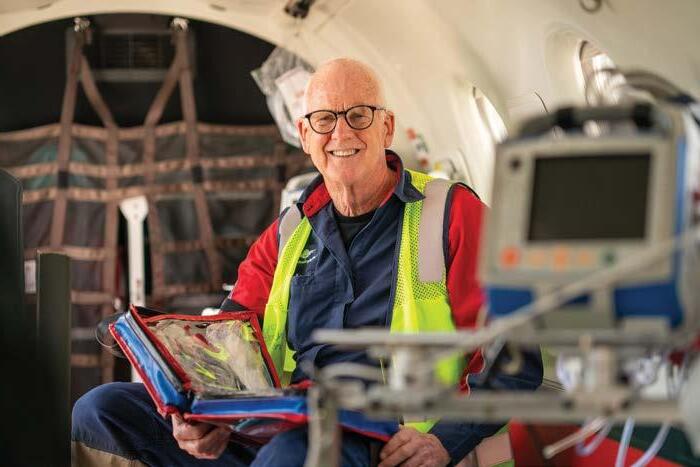
One of John’s most memorable experiences was delivering a baby “on the edge of the desert, under the stars” at Kundat Djaru, south of the Bungle Bungles.

The jets have opened up the whole state so we can fly from Perth up to Kununurra, Broome or even to Christmas Island if
necessary.
John has kept dozens of diaries of his working life, diligently listing the details of every location he’s flown to retrieve more than four thousand patients from every corner of the state. His colleagues tell him he should publish the highlights as a memoir.
“It was midnight, there were stars everywhere and it all went so well,” he said. “But I also get a real kick out of doing the routine stuff and doing it well, keeping everybody safe and comfortable.”
John gets up at 4:30am every day to swim laps, keeping him agile for his physically demanding job. As for the future, John jokes that his wife Maree would like him to retire, but he’s not quite ready.
“I’m fit, I’m healthy and I can still help people,” John said. “I’ve still got the skills and the knowledge.”
Western Australians are very generous. We are so grateful for support from people across the state, from Kununurra to Esperance and everywhere in between. Here are some highlights of the many organisations who continue to bring their community together to raise vital funds for the RFDS in WA.
The 12th Outback Air Race will take to the skies in August. Since 1996, competitors and spectators have raised almost $4 million for the RFDS nationally. More than 40 aircraft will take part in this aviation time trial through the outback, starting in Yulara, NT and finishing in Carnarvon, WA. To find out more visit outbackairrace.com.au
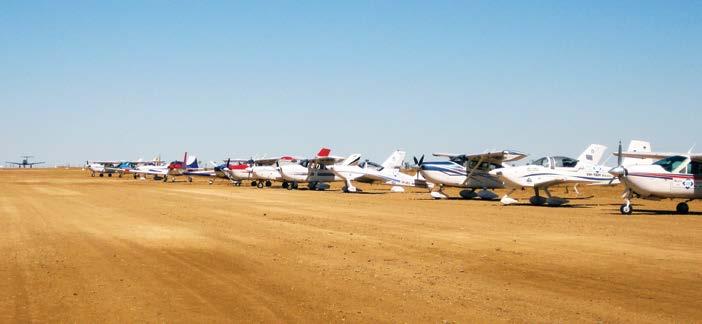
Byrnecut employees donated an incredible $480,000 in 2024. The funds were raised through their Workplace Giving Program, with many staff choosing to donate to the RFDS WA through their regular pay. Donations are automatically deducted from pre-tax earnings, meaning that employees can reduce their taxable income and play a part in supporting regional WA communities.
“At Byrnecut, our workplace giving program is a reflection of our values and our commitment to making a lasting, positive impact. We are proud of the difference we make together
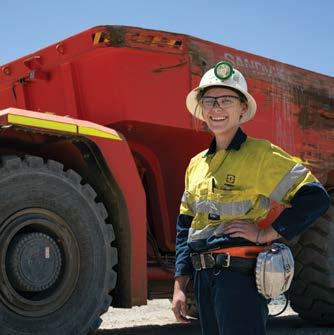
and look forward to continuing our efforts to support the RFDS WA and wider Western Australian community,” said managing director Pat Boniwell. For more information on Workplace Giving contact fundraise@rfdswa.com.au
Shelly and Gemma at Sandfire’s West Perth HQ hold a monthly bake-off. The fiercely competitive colleagues bake and decorate a classic cake inspired by the Australian Women’s Weekly Children’s Birthday Cake Book. Workmates pay $2 a slice, and for a $50 donation, can request which cake the bakers attempt next.
More than $70,000 was raised in 2024 by op shops throughout WA that specifically raise funds for the RFDS. Thank you to all the volunteers who manage the stores and the customers who purchase and donate quality goods.
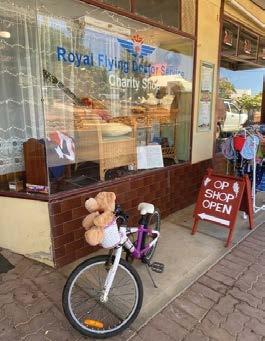
Meet Tyron Meintjes from the RFDS Engineering team who grew up in South Africa. This is a recipe from his Gran, known as ‘Ama Gogologs.’
“I have fond memories of eating this pie as a child on the farm on weekends. We would often go for walks and pick up pecans as we went, our pockets full to the brim. While my Gran cooked dinner, my mum and I would shell the pecans ready for baking. It’s a light and morish dessert that makes ordinary Sunday night dinners with family extra special.”

100g pecans plus a few for garnishing
200g castor sugar
10 water crackers (crushed into crumbs)
5ml vanilla essence
5g baking powder
3 egg whites (4 if using smaller eggs) Cream or icecream, to serve
1. Set oven to 180°C.
2. Finely chop pecans and set aside.
3. Crush crackers into small pieces and set aside.
4. Whisk egg whites together with baking powder until stiff.
5. Beat in castor sugar.
6. Fold in chopped pecans, cracker crumbs and vanilla essence.
7. Spoon into a lightly greased pie dish and garnish with a few pecans.

8. Bake for 20-25 minutes at 180°C until golden brown on top. Serve with cream or icecream.

